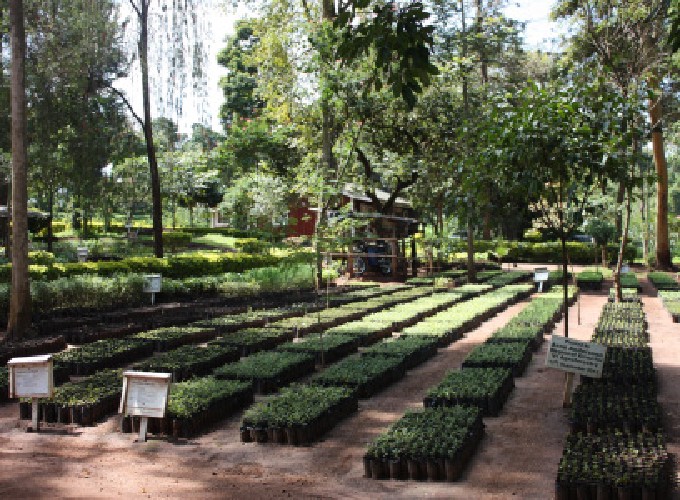Update: this study is now published! The final version is now available (open access) in World Development.
Agroforestry—planting trees on farms—has a lot of benefits for the world at large: trees prevent erosion, store carbon, and provide refuge habitats within the agricultural landscape. And agronomists have reported that trees can support soil health and increase soil organic matter, improving the long-term sustainability of farming systems. But is agroforestry good for the farmer’s bottom line? That’s what we set out to find in the ICRAF study “Assessing the Downstream Socioeconomic Impacts of Agroforestry in Kenya.”
ICRAF (The World Agroforestry Centre) has had an advisory relationship with Vi Agroforestry in Kitale, Kenya for the better part of 3 decades. So when the Standing Panel on Impact Assessment, the CGIAR system’s assessment group, commissioned a study on ICRAF’s research impact, Vi’s programming was chosen as the study subject. I got to be a part of this study thanks to my advisor at the University of Illinois, Kathy Baylis, and ICRAF’s head of impact evaluation, Karl Hughes. Many thanks to both of them and the rest of the ICRAF research team for this great opportunity!
So what did we find? We surveyed over 2800 households in 121 villages in Western Kenya, half of whom had been included in Vi’s agroforestry promotion and agricultural extension program. The results indicate that Vi’s program did indeed increase the intensity of tree planting on participant’s farms (from a baseline of relatively high tree-planting because Kenyan smallholders are amazing!). And participation in the program was associated with higher incomes from firewood sales, milk yields, and greater asset accumulation. Moreover, this asset effect was stronger for households where a woman was the Vi program participant.
My main job on this project was to design and implement the selection of sample villages inside and outside Vi’s program area which we could use as valid comparisons to measure the program’s effect. Vi targeted their program on a limited set of (now reorganized) administrative areas inside 2 county boundaries because they didn’t have funds to cover the whole counties, so we felt we had a random-ish boundary line. But we also wanted the villages inside and outside to be agro-ecologically similar. So I worked up a matching routine based on variables like rainfall and elevation that we ran to match villages inside the program with comparable non-program villages. I’d like to think we did a decent job.
What can we conclude? Agroforestry works, and appears to improve farm incomes and asset levels by a modest amount. The effect size isn’t huge, but given that these farmers are sequestering carbon and preventing soil from washing away downstream, it’s encouraging that a program with public benefits is also worth it for the individual farmers who participate. The next step in the economics of agroforestry in this part of the world would be to estimate effects on an even longer term. Our estimates include very little returns from timber production, since the program was only 8 years old–on the short side for tropical timber production. And comparisons need to be made in terms of cost effectiveness between promoting agroforestry and other rural development interventions.
If you’re interested, take a look at the working paper here, and while you’re at it, scroll through some of ICRAF’s other research. It was a privilege to work with them! Shout-outs to Karl Hughes, Kathy Baylis and co-authors Judith Oduol, Emilie Smith-Dumont, Tor-Gunnar Vågen, and Hilda Kegode. And to the folks at Vi Agroforestry, especially Emmanuel Wachiye, the evaluation and assessment officer at the Kitale office at the time of the study. I really enjoyed working with and learning from everyone involved.

